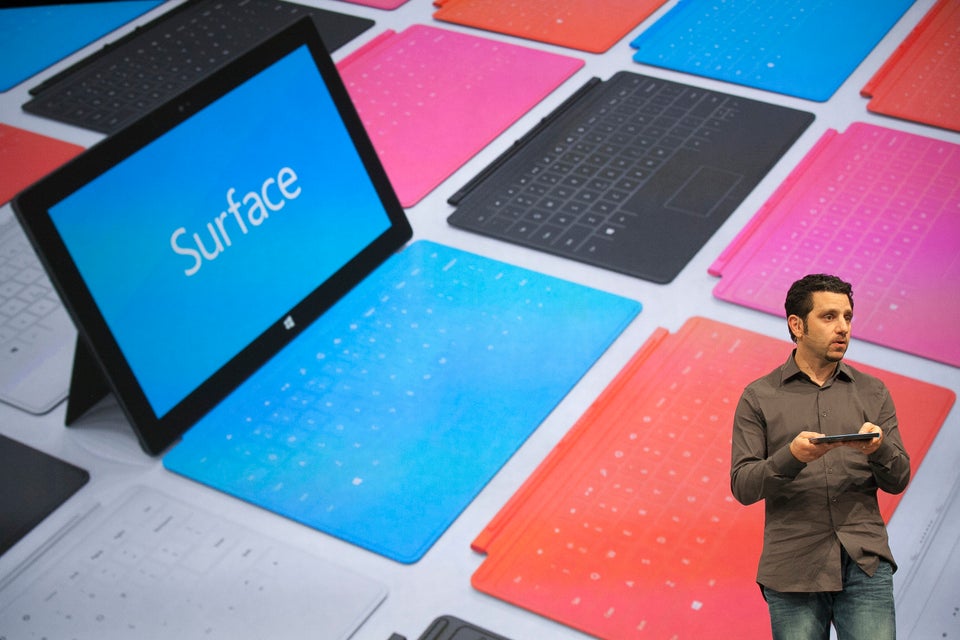On the banks of the Hudson River on Thursday, a band of executives took the stage at New York’s Pier 57 to present the future of Microsoft. A pair of back-to-back events introduced a room of journalists -- and many others tuning in via a live video stream -- to the company’s biggest products in years: its new Windows 8 operating system and its Surface RT tablet.
But wait, no. “Introduce” isn’t the right word. Microsoft already pulled the sheet off Surface during an event in June, surprising everyone by getting into the tablet business. Since then, anything we still needed to know about Surface -- like its price, or its battery life -- we found out through leaks, from the company itself, or through the many reviews that were published this week.
What else was there left to be said about the Surface today? Or more to the point: What was Microsoft trying to prove?
For one, the way the Surface was unveiled -- a June event, a summer of hype-building, the reviewers weighing in, and today's October launch party -- lets Microsoft respond to those reviewers before the first Surface is even sold. More importantly, it lets Microsoft get ahead of the narrative that the Surface is an also-ran to the iPad.
There were plenty of criticisms Microsoft has to shoo away: about battery life, lack of apps, weight, screen resolution, and difficulty using what’s supposed to be a laptop replacement on one’s lap. Microsoft executives, more than once telling audience members to "read the reviews" when discussing things the reviewers liked, seemed to also make counter-arguments to each things they did not like, many times with anecdotes.
- Some reviews complained that the tablet was too heavy compared to its main competitor, the fourth-generation iPad (1.5 lb. vs. 1.44 lb.). “It has to feel light, it has to feel right,” said Panos Panay, the whiz behind the Microsoft Surface. "It feels lighter than it actually is. The weight that’s transfers to your wrist is minimal.”
The Surface is advertised with an eight-hour battery life, again, two hours shy of the iPad. But we know eight hours is enough for us because Panay is able to fly to China and play four HD movies without his Surface going dead. Surface doesn’t stack up to the newest iPad on screen resolution either (264 ppi vs. 148 ppi). Panay reminds us that resolution isn’t all that matters; the Surface has superior contrast and anti-glare. Some reviews found the Surface’s novel keyboard, the Touch Cover, too prone to typos. Panay’s response: Nuh uh. “They look very different. But guess what? They work the same,” Panay said, holding up a Touch Cover and traditional keyboard and mouse. “It’ll take you four, five days to get really comfortable,” he continued. “But once you get comfortable with Touch Cover you’ll be typing.” Other reviewers had trouble using their Surfaces, which come with kickstands, on their laps. Panay related how his daughter likes to watch movies on Surface by flipping the kickstand out and resting it on the back of the Touch Cover (However, with the keyboard face-down, you can't type on it). Finally, reviewers weren't pleased with the lack of apps (especially Facebook) in the Microsoft Store. By comparison, the iPad's app store has more than 275,000 apps. “We see this as a grand opening," another Microsoft executive, Steven Sinofsky, said. He noted that Microsoft’s app store has more apps than any other app store had at launch, reiterating a talking point Microsoft gave TechCrunch this week. But really, what Microsoft wanted to get out of today’s event most of all was for you to stop thinking of Surface as just a tablet. “The idea of ‘Is it a tablet, is it a laptop, what column does it go into?’ It sounds like an 18-year-old arguing, ‘Is it ska, is it reggae, or punk or whatever?’” Michael Angiulo, yet another Microsoft exec, said at the "unveiling."
Why is that? Well this bit is telling: When quoting a New York Times review that said the Surface “has ports and jacks that iPad owners can only dream about,” Angiulo didn't use the phrase "iPad owners" but opted for “other device owners” instead. A bit later, he said Surface "has twice the amount of storage as a competing tablet, for the same price.” That unnamed “competing tablet,” of course, is the iPad.
Microsoft doesn’t want you to think of the Surface as just another tablet. If it’s just another tablet, it’s just another knockoff of the Tablet-That-Shall-Not-Be-Named. Microsoft is charting new territories beyond mere tablets, creating machines that are both PCs and tablets -- or so it believes. And it knows the only way you’ll switch from iPad to Surface is if you believe so as well.
Support HuffPost
Our 2024 Coverage Needs You
Your Loyalty Means The World To Us
At HuffPost, we believe that everyone needs high-quality journalism, but we understand that not everyone can afford to pay for expensive news subscriptions. That is why we are committed to providing deeply reported, carefully fact-checked news that is freely accessible to everyone.
Whether you come to HuffPost for updates on the 2024 presidential race, hard-hitting investigations into critical issues facing our country today, or trending stories that make you laugh, we appreciate you. The truth is, news costs money to produce, and we are proud that we have never put our stories behind an expensive paywall.
Would you join us to help keep our stories free for all? Your contribution of as little as $2 will go a long way.
Can't afford to donate? Support HuffPost by creating a free account and log in while you read.
As Americans head to the polls in 2024, the very future of our country is at stake. At HuffPost, we believe that a free press is critical to creating well-informed voters. That's why our journalism is free for everyone, even though other newsrooms retreat behind expensive paywalls.
Our journalists will continue to cover the twists and turns during this historic presidential election. With your help, we'll bring you hard-hitting investigations, well-researched analysis and timely takes you can't find elsewhere. Reporting in this current political climate is a responsibility we do not take lightly, and we thank you for your support.
Contribute as little as $2 to keep our news free for all.
Can't afford to donate? Support HuffPost by creating a free account and log in while you read.
Dear HuffPost Reader
Thank you for your past contribution to HuffPost. We are sincerely grateful for readers like you who help us ensure that we can keep our journalism free for everyone.
The stakes are high this year, and our 2024 coverage could use continued support. Would you consider becoming a regular HuffPost contributor?
Dear HuffPost Reader
Thank you for your past contribution to HuffPost. We are sincerely grateful for readers like you who help us ensure that we can keep our journalism free for everyone.
The stakes are high this year, and our 2024 coverage could use continued support. If circumstances have changed since you last contributed, we hope you’ll consider contributing to HuffPost once more.
Already contributed? Log in to hide these messages.


